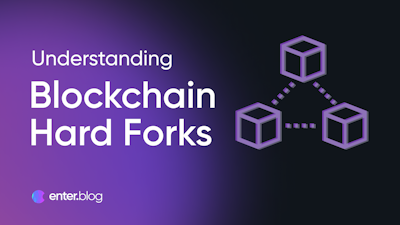
Analysis: 5 Key Lessons To Be Learnt From the Terra UST Debacle
In this article, we take a look a closer look at an event that has been sending shockwaves through crypto in the past few week. How did it happen, and what lessons the crypto community can learn from it?

On the evening of Monday, May 9th, the UST stablecoin, which had always been pegged at 1:1 to the US Dollar, lost its peg. The next sequence of events triggered one of the most cloudy moments in the crypto industry.
The ‘stablecoin’ embarked on a downward spiral, sinking as low as $0.5086 — its all-time low. As this article will show, the crash should not have been a complete surprise, and there are key lessons that must be learnt for crypto enthusiasts and analysts going forward.
However, before delving into the crux of the matter, it is important to note that stablecoins are not to be dismissed, as a good number of them provide real utility for payments in the ecosystem. That said, the million-dollar question for this discourse remains: what are the lessons to be learnt from the Terra UST crash?
#1. Algorithmic stablecoins are vulnerable to runs
Three of the top stablecoins, Binance USD, USDC, and Tether, are all backed by assets and not algorithmic. While the first two are completely backed by bank balances and treasuries, Tether holds a variety of other assets such as commercial paper.
Conversely, Terra UST is algorithmic, i.e. it is built to use arbitrage to maintain its peg to the dollar. It works by burning $LUNA to create UST when the price of UST is too high, while burning UST to create $LUNA tokens when the UST price is low. The Terraform Labs carousel was spinning, and the user-generated enthusiasm in the ecosystem powered UST to overtake Binance USD in April, becoming the third largest stablecoin in the process.
Only, the bubble was doomed to burst someday. Chris Catalini, a former chief economist at Diem, authored a paper last year, explaining why algorithmic stablecoins and by extension, Terra UST, were doomed to fail. As accurately predicted by Catalini, algorithmic stablecoins are generally unlikely to withstand very harsh market conditions or a run on their reserves. That is what has happened to Terra UST, and although Terraform Labs and Do Kwon, its founder, has tried what Catalina describes as the solution — winding down the balance — nothing has worked so far. Terra Labs is now trying to revive the $LUNA token by creating a new chain.
https://twitter.com/terra_money/status/1528801778556448771?s=21&t=RfmsMan60Kcl729rnl_TYw
Simply put, algorithmic stablecoins are more prone to runs than asset-backed ones, more so if these stablecoins involve the protocol’s token.
#2. 19.5% was too good to be true
Lending protocols in DeFi, like Aave and Compound, are two-sided — lending and borrowing markets whose interest rates are driven by market forces. For the Terra/Luna blockchain, Anchor was the lending protocol, albeit with an artificial deposit interest rate of up to 19.5%. This was a key reason for the expanding amount of the UST stablecoins being issued by the protocol, rather than any real utility.
Three months ago, the Luna Foundation Guard furnished Anchor with $450 million to keep up the interest payments. At this point, worry among investors began to mount about Terra being a Ponzi, but since the UST market capitalization and $LUNA’s price shot through the roof, there wasn’t much to be said. After all, you don’t fix what is not broken — at least not yet.
The responses to the grant proposal gave the first signal that the decision making in the protocol pointed to it being CeFi and not DeFi. One comment pointed out a $450 million loan by anchor to a single wallet, which didn’t seem to be using the loan but paid a very high interest rate. This whale was described as “generous anonymous investors.”
These, and several events that followed, were key preludes to the debacle that soon followed.
Key lesson: If it looks too good to be true, it probably is.
#3. There must be more transparency and pseudonymity
Blockchain technology is revolutionary for, amongst other things, its transparency. However, cryptocurrency exchanges are opaque. Until the Luna Foundation Guard clarified what it had done with its reserve in a series of tweets on May 16th, everyone was kept in the dark regarding what had been done with much of the 80,394 $BTC in the LFG reserves. Thankfully, the LFG clarified that in the thread embedded below:
https://twitter.com/lfg_org/status/1526126703046582272?s=21&t=e_N4U4b16ccpXcE-ex3Bgg
Worse still, it was reported by CoinDesk earlier in May that Do Kwon, using a pseudonym, was behind yet another algorithmic stablecoin, Basis Cash. That, too, failed, and basis cash is worth barely $0.007 at press time. This points to the fact that track records matter, especially in finance. This also points to the fact that people who have fiduciary responsibilities to investors must be vetted under stricter regulations.
#4. Get Shelter Before the Storm
There have been various conspiracy theories circulating about crypto whales triggering the crash. What is evident, however, is that the numbers show that some saw the storm miles away, while the clouds were still forming. Evidence: UST dropped below $0.99 at around 5pm GMT on May 9. However, volumes began to pick up two days earlier at 11pm GMT and the value of UST dropped below 99.5 cents three hours later.
Few hours after the latter event happened, OKX sent this message out, “OKX risk management system noticed the price volatility of $LUNA and $UST in Anchor Protocol and redeemed the principal and pool rewards for OKX users on May 8, 2022, 2 am UTC before the depeg occured. Users were notified immediately.”
It bears repeating for everyone in the crypto ecosystem: sometimes if it looks like the storm is coming, it may be coming indeed. Get out before the stampede if possible.
#5. The desire for algorithmic stablecoins will persist
Despite the obvious risks with algorithmic stablecoins, the crypto community is likely to continue in pursuit of them— or, in the worst-case scenario, crypto-backed stablecoins like DAI. This is because one of the pillar points of crypto adoption is decentralization, and fiat asset-backed stables are inherently centralized, leading to distrust of centralized institutions among many.
As central banks continue to promote their digital currencies (CBDCs), the sentiment for ‘decentralized’ stablecoins is likely to increase. Although CBDCs are more secure, they do not offer anonymity of cash. And although the lazy argument that anonymity of cash is preferred by criminals for their nefarious activities persists, the truth remains: millions in Africa and Asia who are under the purview of despotic regimes cannot be too grateful for the anonymity of cash that DeFi provides them.
Conclusion
The jury is out — as it has always been — against the crypto community. Doubters are doubting, feds are squeezing the knobs of regulation, and many are stuck in extreme fear. But what remains true is that despite the dip in confidence that the Terra crash has caused, the crypto community will be back stronger — as it has always been.
This article is written by Chidera Anushiem as a part of enter.blog's bounty program. Do you have an interesting topic, series or subject you think would be fitting for enter.blog?
You can now submit your articles to enter.blog and get paid for your contributions!
Read more and submit your article here.
Crypto & Learning
Hungry for knowledge? Here you can get acquainted with blockchain, wallet security, DeFi and much more.

PUBLISHED 9TH SEPTEMBER 2022
Ethereum Merge 1: What Is The Ethereum Merge?
One of crypto’s most anticipated events is finally here: The Ethereum Merge. In this article, we take a closer look at what the merge is as well as how it benefits the environment and lays the foundation for greatly improving transaction output and gas fees on Ethereum Mainnet.

PUBLISHED 2ND OCTOBER 2022
Five Types Of Consensus Mechanisms You Should Know About
How do blockchains ensure that transactions are real, valid, and not the product of fraud? The answer is consensus mechanisms, and in this article, we take a closer look at the pros and cons of five of the most popular consensus mechanisms in crypto.




